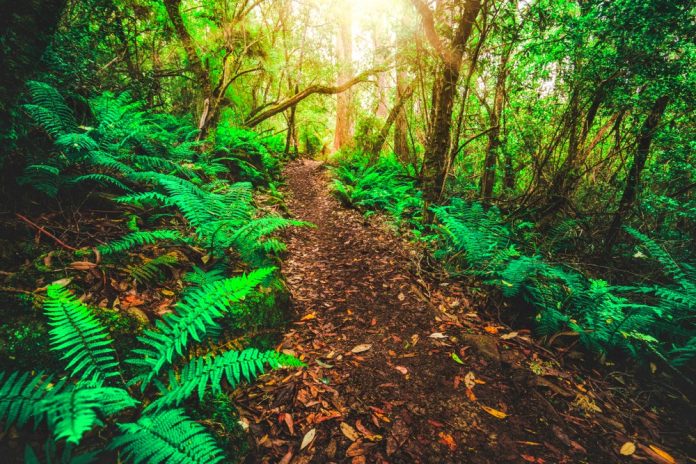Between 450 BC Between 1000 BC and 950 AD, the Native American peoples living in what is now the Amazon fundamentally changed the originally poor soils of their habitat, enriching them with charcoal from their weak fires used for cooking and burning refuse, as well as dung, animal bones , broken pottery, and compost. The result is the exceptionally fertile Amazon Dark Earth (ADE) – “Tera Preta” – rich in nutrients and stable organic matter derived from charcoal (an element that also gives it its dark color).
In a new study published in the journal Frontiers in Soil Science, a team of Brazilian scientists have argued that the Amazon’s dark soil could be a “secret weapon” to boost reforestation efforts not only in the Amazon — where 18 percent of the Forests were lost in the 1970s – but also worldwide.
“Here we show that the use of ADEs can promote the growth of willows and trees due to their high nutrient content as well as the presence of beneficial bacteria and archaea in the soil microbial community,” said co-lead author Luís Felipe Zagatto, PhD student at the Center for Nuclear Energy in Agriculture from the University of São Paulo (USP) in Brazil. “This means that knowing the ‘ingredients’ that make ADEs so fruitful could help accelerate ecological restoration projects.”
To study the ecological succession and soil changes that occur when pastures actively revert to forests in deforested areas, and to assess the role of ADEs in promoting this process, the experts conducted controlled experiments using 36 four-liter Pots of three kilograms of soil kept in a greenhouse with an average temperature of 34°C (to anticipate global warming beyond the current average Amazonian temperatures of 22-28°C). One-third of these pots were filled with control soil, another third with a 4:1 mix of control soil and ADE, and a final one full of ADE.
After planting palisade grass (Urochloa brizantha) — a common forage in Brazil — in each pot and letting it grow for 60 days, they cut it off, leaving only its roots in the ground to mimic “virgin territory.” for reforestation. They then replanted each of the three soil types with different types of tree seeds—the colonizing species Ambay Pumpwood (Cecropia pachystachya), Peltophorum dubium typical of secondary forests, and Cedro blanco (Cedrela fissilis) typical of climax forests.
After growing the seedlings for three months, the researchers measured their height, root extent and dry matter, as well as changes in pH, texture, concentrations of potassium, calcium, magnesium, aluminum, boron, sulfur, copper, iron and zinc. Finally, they quantified the microbial diversity of each soil type.
The analyzes revealed that ADEs contained greater amounts of nutrients and supported a greater diversity of bacteria and archaea than control soils.
“Microbes convert chemical soil particles into nutrients that plants can absorb. Our data showed that ADE contains microorganisms that are better at this conversion of soils and thus provide more resources for plant development,” explains co-first author Anderson Santos de Freitas, PhD student at USP.
Additionally, adding Amazonian dark soil to soils improved plant growth and development (reducing palisade grass dry matter by 3.4 times in 20 percent ADE and 8.1 times in 100 percent ADE compared to the control soil) as well as the growth of the three tree species (e.g. seedlings of Cedro Blanco and P. dubium were 2.1 and 5.2 times larger in 20% ADE and 3.2 and 6.3 times greater in 100% ADE than in control soils).
Although these results provide clear evidence of the benefits of dark Amazonian soil in restoring trees, this type of soil took thousands of years to accumulate and would most likely take just as long to regenerate in nature, if it is used.
“Our recommendation is not to use ADE itself, but to copy its properties, particularly its microorganisms, for use in future ecological remediation projects,” concluded senior author Siu Mui Tsai, Professor of Cell and Molecular Biology at USP.
More about tree restoration
Tree restoration refers to the process of repairing and restoring damaged, degraded, or destroyed forests and tree ecosystems. It aims to bring back the environmental, economic and social benefits that healthy forests provide. This can be accomplished through a variety of methods including natural regeneration, no-till, tree planting, and assisted natural regeneration.
Tree sanitation is critical for several reasons:
conservation of biological diversity
Forests are home to a wide variety of plant and animal species. Restoring forests helps conserve and protect this biodiversity, which is essential to maintaining the balance of ecosystems and supporting human livelihoods.
climate protection
Trees absorb and store carbon dioxide, which is an important greenhouse gas that contributes to climate change. By restoring forests, we can help mitigate the effects of climate change by increasing the carbon sequestration capacity of these ecosystems.
erosion control
Tree roots stabilize soil and prevent erosion, which can lead to loss of fertile soil and sedimentation in water bodies. Restoring forests can help protect and maintain soil quality and prevent erosion.
regulation of the water cycle
Trees play a crucial role in regulating the hydrological cycle by absorbing and releasing water through transpiration. Restoring forests can help conserve water resources and reduce the risk of floods and droughts.
livelihoods and economic benefits
Forests provide resources such as timber, non-timber forest products, and opportunities for ecotourism. Restoring forests can create jobs and support local economies while providing valuable ecosystem services.
To achieve successful tree restoration, it is important to consider factors such as site selection, appropriate tree species, timing of planting, and long-term care.
Engaging local communities in restoration efforts and developing sustainable forest management practices can further improve the success and sustainability of tree restoration projects.
—-
By Andrei Ionescu, Earth.com contributor
Check us out on EarthSnap, a free app by Eric Ralls and Earth.com.
www.earth.com
https://www.earth.com/news/amazonian-dark-earth-could-be-used-to-boost-tree-reforestation/













